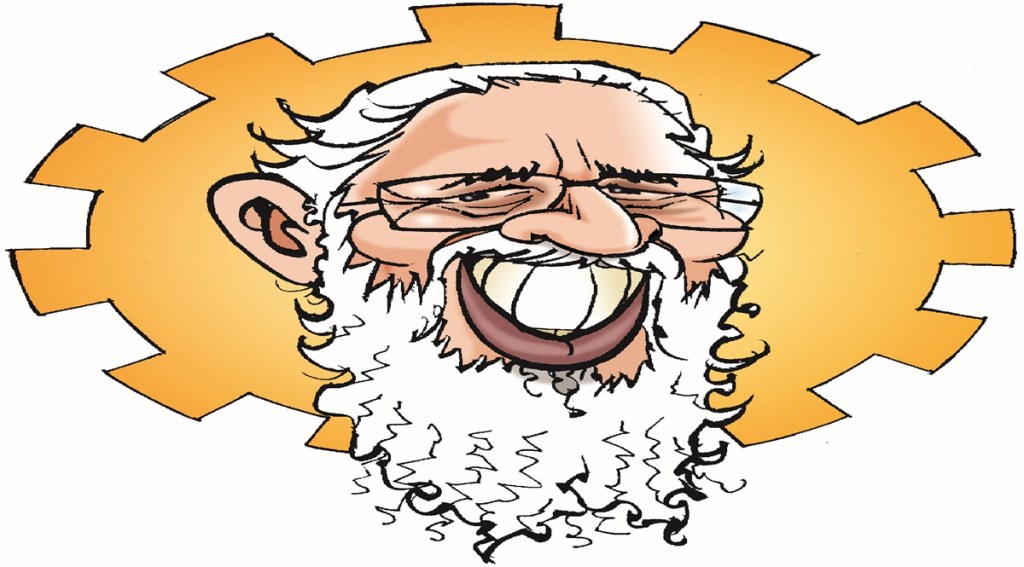The Ukraine student crisis is a wake-up call to strengthen our educational infrastructure. “We need to develop a large number of high-quality institutes in all domains,” says Anil D Sahasrabudhe, Chairman, AICTE. In an interview with FE’s Vikram Chaudhary, he adds that the digital university will be a game changer in increasing the gross enrolment ratio from 27% to 50%. Excerpts:
Why is the ‘digital university’ being called a game changer?
The NEP 2020 focuses on increasing the gross enrolment ratio from 27% to 50%. It cannot be done only by brick-and-mortar universities—upgrading which requires massive funding and infrastructure upgrade. Digital education is one way of reaching out to the unreached—those who live in remote villages and mountainous areas—and hence the digital university can be a game changer.
It will be a boon for students from low-income families in remote places who can’t move to cities for good education because they can’t afford extra living expenses apart from the high fees. Even if there is a good university in every district, it can be more than 100 km away from a poor village youth in that district, who might not be able to afford transport expenses or again living expenses.
Under BharatNet, internet penetration is deepening, and digital is possibly the best thing that happened to education. I think in a couple of years, every corner of the country would have internet connectivity.
But such students need low-cost devices to study online. Some years ago, we used to have the Aakash tablet…
We need a tablet that is connected to the internet and has a lot of preloaded content and governments (both state and central) have to figure out how to provide such devices at a mass scale.
In the 21st century, will the digital university play a role similar to what the IGNOU played in the 20th century?
Yes, its role can be termed as an expansion of the work IGNOU did earlier. IGNOU used to send study material to students’ homes and to clear their doubts students needed to visit ‘study centres’, where the resources used to be faculty, library, etc. As part of the digital university, students will be able to get their difficulties solved sitting at home—library and faculty are all online.
While world-class foreign universities will be allowed to operate in the Gujarat International Finance Tec-City (free from domestic regulations), will they come? Can we learn from the failures or successes of global examples such as the Education City in Doha?
The kind of operating environment we are able to provide to foreign universities in GIFT City will be important. Also, living expenses are lower in India than in developed countries, so I won’t be surprised if students from other countries look at foreign university campuses in GIFT to study. The best thing is, in GIFT, there will be no regulatory bottlenecks. It will be a model that can be replicated in other places as well later based on the success in GIFT City.
Will it be similar to how educational institutes have sprung up near Sonepat in Haryana?
Despite all regulations, universities in that area are doing so well. Now if universities aren’t bogged down by certain regulations that keep delaying certain processes, they can perform even better.
The government is expanding the ‘One Class, One TV channel’ under PM e-Vidya from 12 to 200 TV channels. Are kids known to learn from TV? Isn’t this a stop-gap arrangement to reach those areas where there is no internet connectivity?
It will take some time for the internet to reach everywhere, but TV is already there. These channels don’t deliver lessons one time but repeat these lessons. I have seen that if the subject is made interesting by innovative education delivery methods, students gravitate towards it. Soap operas are popular because these create excitement in the minds of viewers—what is going to happen next!—and if we can do a similar thing with knowledge sessions or lessons, students would look forward to these.
While the AICTE doesn’t govern medical education, do you think the Ukraine student crisis is a wake-up call to strengthen not only our medical education infrastructure but technical as well? What steps can be taken towards that?
Yes indeed. In fact, the wake-up call has been there for over more than a decade, with the number of outgoing students in the range of 4-5 lakh and incoming foreign students in India approximately 45,000 (10:1 ratio). Hence, Study in India was launched. The pandemic also affected a lot. So there have been warning signals for some time. Ukraine has been an even more serious challenge. We need to develop a large number of high-quality institutes in all domains.


